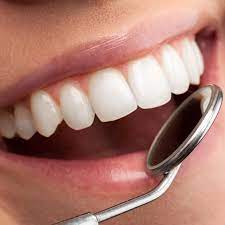If you’re considering a complete dental makeover, you may be wondering—are dental implants used in full mouth rehabilitation? The answer is yes. Dental implants play a crucial role in restoring both function and aesthetics in cases where multiple or all teeth are missing or damaged. Full Mouth Rehabilitation is a comprehensive approach that addresses dental issues involving bite alignment, gum health, and tooth loss. Implants are often the foundation of this treatment, providing durability, support, and a natural-looking smile.
The Role of Dental Implants in Full Mouth Rehab:
Dental implants are titanium posts surgically placed into the jawbone to serve as artificial roots for replacement teeth. In full mouth rehabilitation, they are essential when traditional crowns or bridges alone cannot restore stability or function.
Here’s why implants are so frequently used in full mouth rehabilitation:
- They offer permanent support for prosthetic teeth
- Prevent bone loss by stimulating the jawbone like natural roots
- Enhance bite strength, allowing patients to chew comfortably
- Provide a secure anchor for full arch restorations or bridges
- Improve facial structure, preventing a sunken appearance
Unlike removable dentures, implants provide long-term solutions that feel and function like real teeth.
Who Needs Dental Implants in Rehabilitation?
Not everyone undergoing full mouth rehabilitation will need implants, but they are ideal for patients who have lost several teeth or have severely damaged teeth beyond repair.
You may be a good candidate for implants during full mouth rehab if:
- You are missing multiple or all teeth in the upper or lower jaw
- Your remaining teeth are non-restorable due to decay or trauma
- You have enough healthy bone to support implant placement
- You want a more permanent solution than dentures
- You suffer from advanced periodontal disease leading to tooth loss
Your dentist will assess your oral and bone health using scans and digital imaging to determine if implants are suitable.
Types of Implant Solutions in Full Mouth Rehab:
There are several implant-based options that can be incorporated into a full mouth rehabilitation plan, each tailored to the patient’s specific needs and budget.
Popular implant solutions include:
- All-on-4 implants, where four implants support a full arch of teeth
- Implant-supported bridges, ideal when several adjacent teeth are missing
- Individual implants, used to replace one tooth at a time
- Zygomatic implants, used in cases of severe bone loss
- Mini implants, suitable for those with minimal bone density
The type of implant solution recommended will depend on the number of teeth missing, jawbone condition, and treatment goals.
Benefits of Using Implants in Full Mouth Rehab:
Integrating implants into your full mouth rehabilitation plan can significantly improve your quality of life. They not only restore appearance but also offer functional advantages that traditional prosthetics cannot match.
Key benefits of implants in full mouth reconstruction:
- Look and feel like natural teeth, boosting confidence
- Improve speech clarity compared to loose-fitting dentures
- Provide long-lasting durability, often lasting decades
- Eliminate discomfort, slipping, or soreness from removable dentures
- Help maintain healthy jawbone and overall oral structure
With proper care and regular dental visits, dental implants can become a lifelong solution within your full mouth rehab.
What to Expect During the Implant Process?
Getting dental implants as part of a Full Mouth Rehabilitation Treatment plan involves multiple stages and requires careful planning. The timeline can vary depending on your oral health and the complexity of your case.
Typical steps in the implant process include:
- Initial consultation and full-mouth assessment
- Diagnostic imaging, such as 3D scans or panoramic X-rays
- Treatment planning, which may include bone grafting if needed
- Surgical placement of implants into the jawbone
- Healing period (osseointegration) lasting 3–6 months
- Placement of abutments and final restorations (crowns or bridges)
Though the process takes time, the long-term results are well worth the investment for those seeking complete dental transformation.

